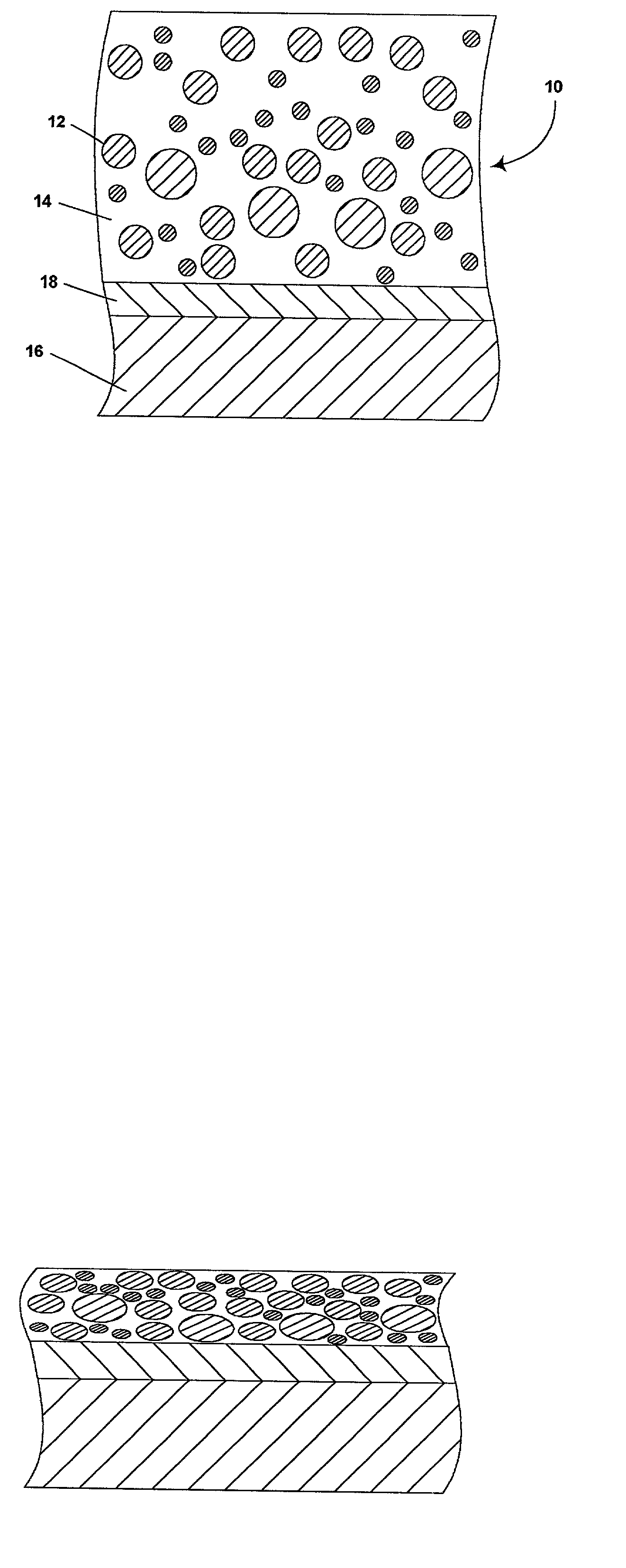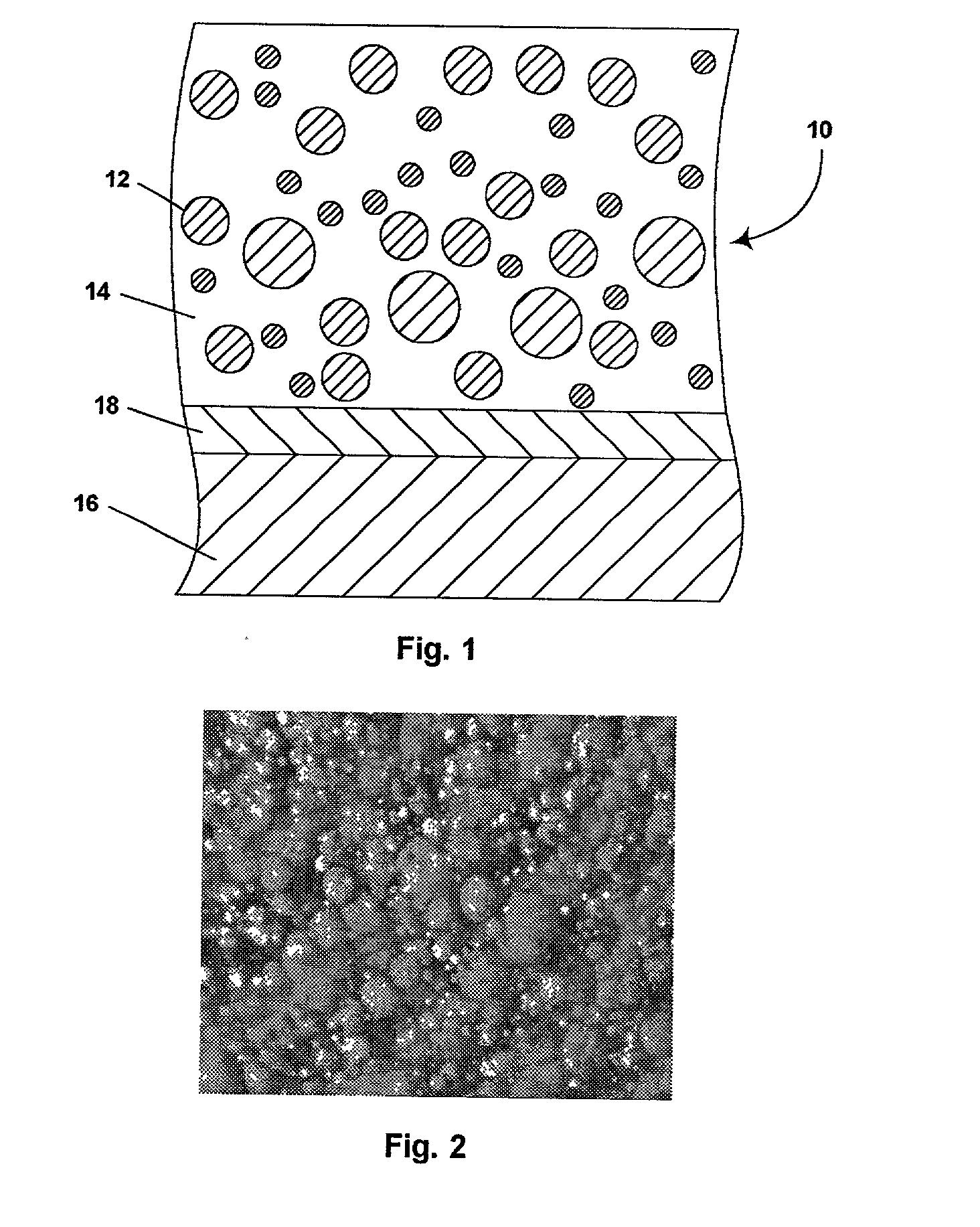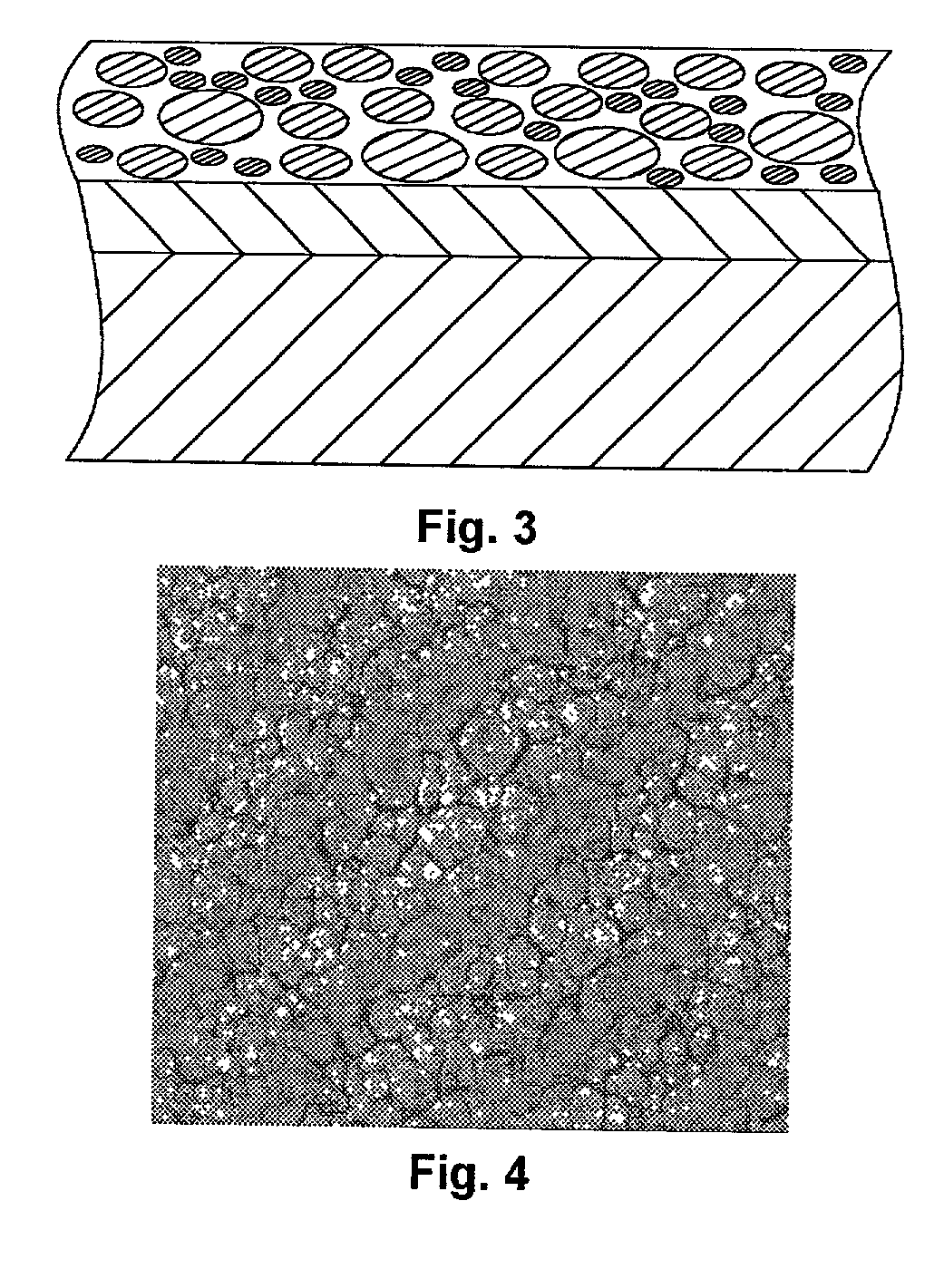Electrophoretic medium and process for the production thereof
- Summary
- Abstract
- Description
- Claims
- Application Information
AI Technical Summary
Benefits of technology
Problems solved by technology
Method used
Image
Examples
example 2
[0054] Example 1 was repeated except that the internal phase contained 17 percent by weight white particles and 1.8 percent by weight black particles, and that only 59.5 g of internal phase was added to 200 g of gelatin solution in order to keep the volume ratio of the two phases the same as in Example 1. Also, a 5 mil (127 .mu.m) gap was used with the draw down bar to produce a dried electrophoretic medium approximately 41 .mu.m thick and having a maximum droplet size of about 35 .mu.m.
[0055] In order to test the switching properties of the medium, the medium was vacuum laminated at 60.degree. C. to a ITO-coated polyester using NeoRez R-9320 urethane binder (available commercially from Zeneca Resins, Wilmington, Del.; NeoRez is a Registered Trade Mark) as the lamination adhesive; the lamination adhesive layer in the final structure was 79 .mu.m thick. A 30 V square wave form (500 msec at 30 V followed by 500 msec at 0 V) was applied to the electrodes. The electrophoretic medium swi...
PUM
| Property | Measurement | Unit |
|---|---|---|
| Fraction | aaaaa | aaaaa |
| Percent by mass | aaaaa | aaaaa |
| Fraction | aaaaa | aaaaa |
Abstract
Description
Claims
Application Information
 Login to View More
Login to View More - R&D
- Intellectual Property
- Life Sciences
- Materials
- Tech Scout
- Unparalleled Data Quality
- Higher Quality Content
- 60% Fewer Hallucinations
Browse by: Latest US Patents, China's latest patents, Technical Efficacy Thesaurus, Application Domain, Technology Topic, Popular Technical Reports.
© 2025 PatSnap. All rights reserved.Legal|Privacy policy|Modern Slavery Act Transparency Statement|Sitemap|About US| Contact US: help@patsnap.com



